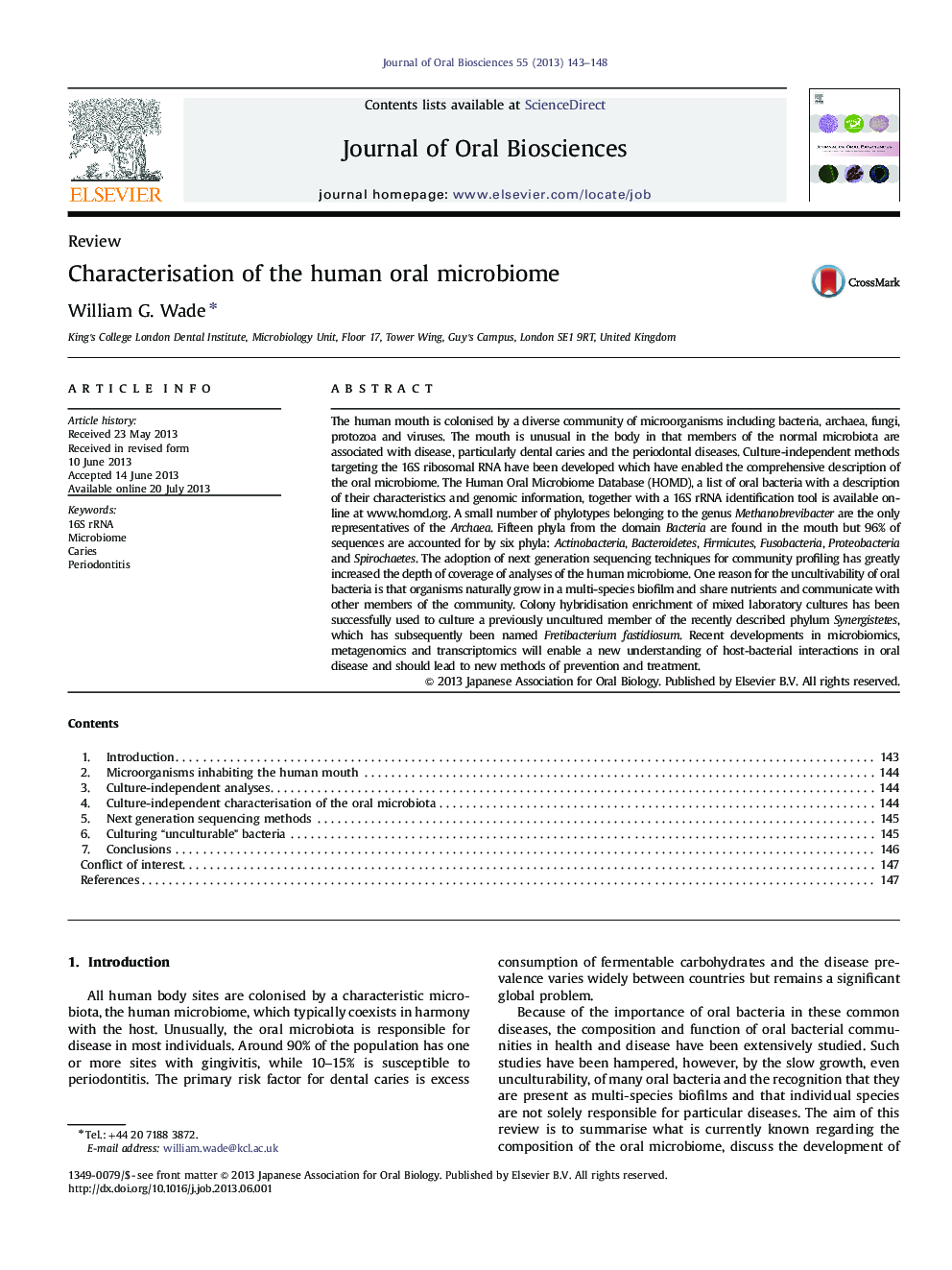| Article ID | Journal | Published Year | Pages | File Type |
|---|---|---|---|---|
| 2776890 | Journal of Oral Biosciences | 2013 | 6 Pages |
The human mouth is colonised by a diverse community of microorganisms including bacteria, archaea, fungi, protozoa and viruses. The mouth is unusual in the body in that members of the normal microbiota are associated with disease, particularly dental caries and the periodontal diseases. Culture-independent methods targeting the 16S ribosomal RNA have been developed which have enabled the comprehensive description of the oral microbiome. The Human Oral Microbiome Database (HOMD), a list of oral bacteria with a description of their characteristics and genomic information, together with a 16S rRNA identification tool is available on-line at www.homd.org. A small number of phylotypes belonging to the genus Methanobrevibacter are the only representatives of the Archaea. Fifteen phyla from the domain Bacteria are found in the mouth but 96% of sequences are accounted for by six phyla: Actinobacteria, Bacteroidetes, Firmicutes, Fusobacteria, Proteobacteria and Spirochaetes. The adoption of next generation sequencing techniques for community profiling has greatly increased the depth of coverage of analyses of the human microbiome. One reason for the uncultivability of oral bacteria is that organisms naturally grow in a multi-species biofilm and share nutrients and communicate with other members of the community. Colony hybridisation enrichment of mixed laboratory cultures has been successfully used to culture a previously uncultured member of the recently described phylum Synergistetes, which has subsequently been named Fretibacterium fastidiosum. Recent developments in microbiomics, metagenomics and transcriptomics will enable a new understanding of host-bacterial interactions in oral disease and should lead to new methods of prevention and treatment.
